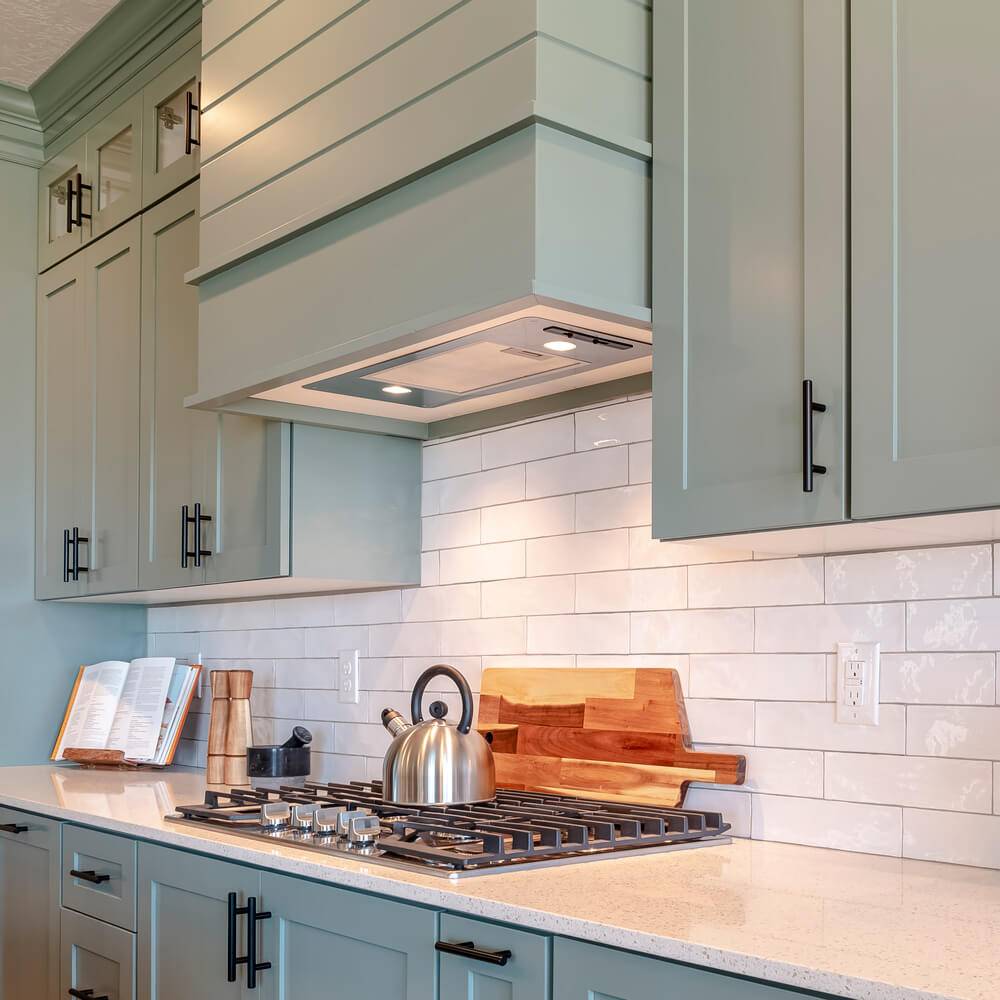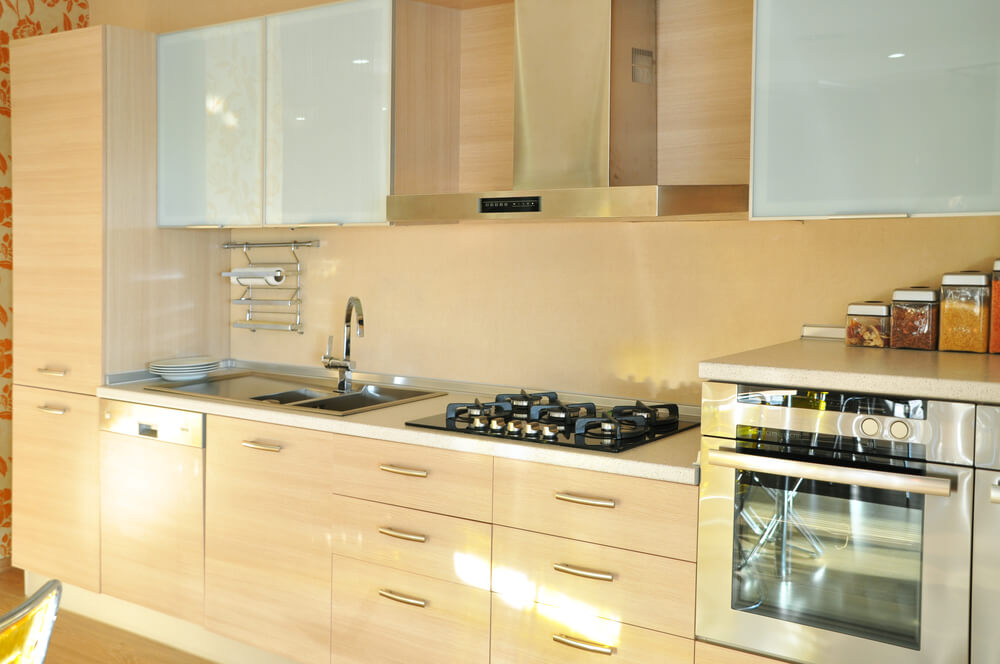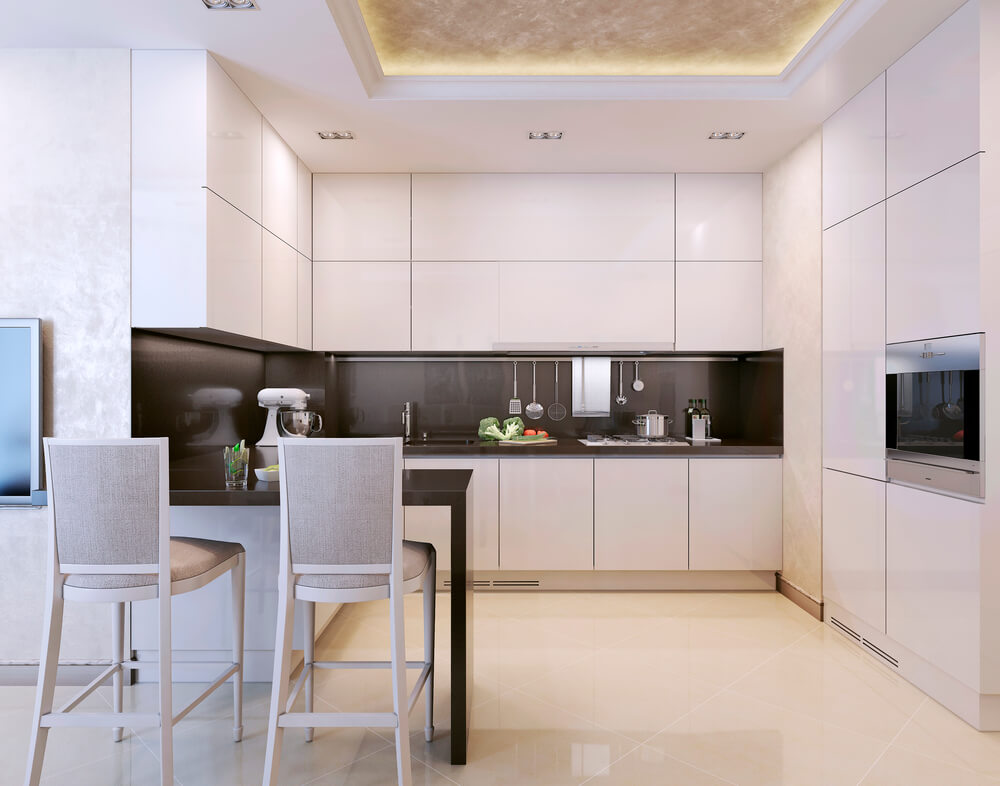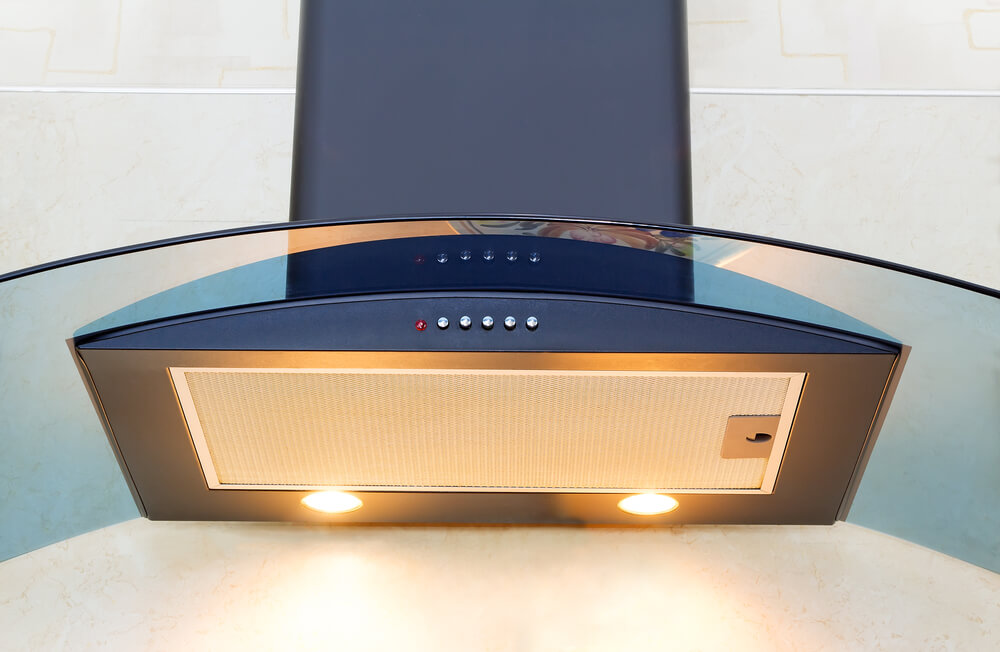Looking to conceal an exposed kitchen chimney duct pipe in your kitchen? Then you’re in the right place!
In this post, I’ll provide you with the top four ideas to effectively hide and cover the pipe, allowing you to enjoy the benefits of your kitchen chimney without compromising the aesthetics of your kitchen. Let’s dive in!
#1. Use False Cabinets To Hide The Kitchen Chimney Pipe

A false cabinet is a type of cabinet that is designed to conceal something that you don’t want to be seen, like a chimney vent pipe. It’s a great solution for anyone who wants to keep their kitchen looking sleek and stylish.
To install a false cabinet, you’ll need to measure the length and width of the chimney vent pipe. This will help you choose a cabinet design that’s the right size to cover the pipe.
Once you have your cabinet, you can cut holes in the top and bottom of the cabinet to allow the pipe to pass through.
Recommended: Kitchen Chimney Fitting On Window: A Complete Guide
#2. Create A Column And Cover The Chimney Pipe
Another way to hide the chimney pipe in the kitchen is to create a column around the pipe. This will help to conceal the pipe and create a more cohesive look in your kitchen.
To create a column, you’ll need to build a structure around the chimney pipe using wood or another sturdy material. You can create a rectangular or circular column, depending on your personal preference and the layout of your kitchen.
Once you’ve built the structure, you can cover it with drywall or another material to create a smooth surface. You can then paint or decorate the column to match the rest of your kitchen.
#3. Give The Chimney Pipe The Same Color As The Background Wall

To make the chimney pipe in your kitchen less noticeable, you can apply the same color to the vent of your kitchen hood as that of the background wall. This will help to blend the pipe into the background and make it less visible.
To paint the chimney pipe, you’ll need to clean it thoroughly first to remove any dirt, grease, or other debris. You can use a degreaser or a mixture of warm water and dish soap to clean the surface.
Once the pipe is clean, you can sand it lightly to create a rough surface that will help the paint adhere.
Next, you’ll need to choose a paint that matches the color of your background wall. You can bring a sample of the wall color to the paint store to help you find a match.
You’ll also need to choose a paint that’s suitable for high-heat environments, as the chimney pipe can usually get very hot in day-to-day cooking-related usage.
When you’re ready to paint, start by applying a coat of primer to the chimney pipe. This will help the paint adhere and create a smoother surface.
Once the primer is dry, you can apply the first coat of paint. Depending on the color of the pipe and the wall, you may need to apply two or three coats of paint to achieve a seamless look.
Speaking of heat-resistant paints, if you prefer a quick solution then I highly recommend checking out this heat-resistant spray paint (available on Amazon).
You can use it on various surfaces including metal, plastic, and wood. And the best part, it is heat resistant and easy to apply, which makes it perfect to apply on a kitchen chimney cover. But make sure its color matches the background wall before applying it to properly hide the kitchen chimney.
#4. Covering The Kitchen Chimney Using Drywall (Plasterboard)

If you’re looking for a way to make your kitchen look more sleek and polished, you may consider covering your kitchen chimney using a drywall cover. This can be a great option if you have enough space in your kitchen and want to create a clean and uncluttered look.
To get started, you’ll need to plan the size and shape of your cover and measure the area where you’ll be installing it. Once you have your measurements, you can build a sturdy frame using and then fit in the pieces of drywall over the frame to create a continuous structure.
After the drywall is in place, you can apply joint compounds to the seams and screw holes to create a smooth surface. Finally, you can paint the drywall to match the rest of your kitchen or use wallpaper to create a textured finish
There’s one downside to this method and that is the design can look and feel a bit bulky. Also, for some, it may not give a modern aesthetic in the kitchen. That said, it is also one of the effective ways to hide the kitchen hood vent pipe.
Can You Use The Kitchen Chimney Without Pipe?
Yes, it is possible to use a kitchen chimney without a vent pipe, but in that case, you would need to use a ductless kitchen chimney. These chimneys work by filtering smoke, steam, and cooking odors through a charcoal filter and then recirculating the air back into the room, rather than venting it outside of your home.
| Ducted Kitchen Chimney | Ductless Kitchen Chimney |
| Comes with a vent pipe | There’s no need for a vent pipe |
| Air is circulated out of the kitchen | Air is circulated inside the kitchen after being filtered |
| Preferable for humid kitchens where heavy cooking is done | Preferable in kitchens where too much cooking is not done. |
| Need relatively less maintenance | Needs relatively more maintenance, especially, since you have to replace the filter every two-three months |
When it comes to choosing a kitchen chimney, there are two main types: ducted and ductless.
Ducted kitchen chimneys, which come with a vent pipe, are generally more efficient and powerful at removing smoke and other gasses that are created while cooking on your stovetop.
This is because the vent pipe allows the smoke and gas to be expelled from your home, rather than just filtering it and recirculating it back into the kitchen.
On the other hand, if you live in an apartment or a home without a suitable space to vent the chimney pipe outside, a ductless kitchen chimney may be more suitable.
These chimneys do not require a vent pipe and instead use a filter to clean the air and recirculate it back into the kitchen.
While they may not be as efficient as ducted chimneys, they are still effective at filtering the air before recirculating it back into your kitchen.
Is It Important To Have A Kitchen Chimney Over The Stove?
Having a range hood over your stove is really important for a number of reasons.
Firstly, a kitchen chimney helps to improve the air quality in your kitchen by removing smoke, steam, and cooking odors that can build up while you’re cooking. Without a kitchen chimney, all of those things can linger in the air, making your kitchen feel stuffy and smelly.
Secondly, a kitchen can also help to keep your kitchen clean by capturing grease and other cooking byproducts that can splatter onto your walls and countertops. Over time, this grease can build up and become really difficult to clean, but a range hood helps to prevent that from happening.
In recent years, kitchen chimneys have become an increasingly important feature of modern households and kitchens.
They are designed to help improve the air quality in your home by removing smoke, steam, and cooking odors that can build up while you’re cooking. So overall, having a kitchen chimney is a necessary addition to any modern kitchen.
Recommended Reading: Top 7 Easy Methods To Clean Kitchen Chimneys!

